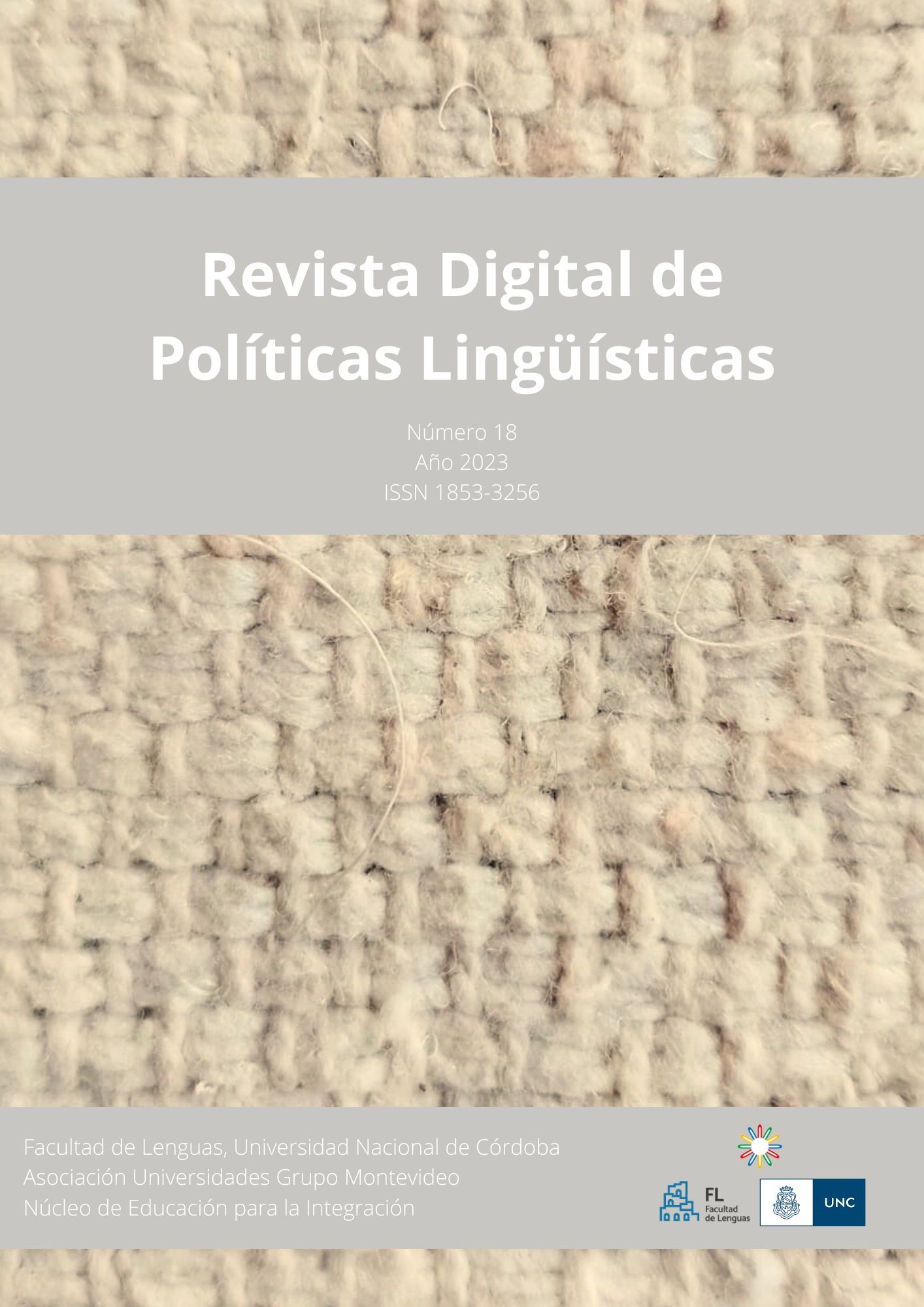THE DEAF AND SIGNED LANGUAGE IN URUGUAYAN LEGISLATION: CONTRADICTIONS AND THREATS FOR A SMALL COMMUNITY
Keywords:
deaf community, Uruguayan sign language, disabilityAbstract
In Uruguay, laws and decrees regarding Deaf people or Uruguayan sign language swing between to major perspectives: on one hand, the acknowledgement of Deaf people as sign language users; on the other, the inclusion of Deaf people as a group of what is usually labeled as disability. Due to Deaf community’s specific traits, both perspectives seem to be mutually exclusive, since the protection of their rights as disabled people lead to implement policies that compromise their acces to Deaf culture and sign language. This could lead to a lack of integration of the new generations within the Deaf community, hence endangering its existence in the decades to come.
Downloads
References
Acevedo, E. (1934). Anales históricos del Uruguay. Tomo IV. Casa A. Barreiro y Ramos.
Barrios, G. (2011). El tratamiento de la diversidad lingüística en la educación uruguaya (2006-2008). Letras, 21(42), 15-44.
Bébian, A. (1817). Essai sur les sourds-muets et sur le langage naturel. J. G. Dentu.
Bonet, J.P. (1620). Reduction de las letras y arte para enseñar a ablar los mudos. Francisco Abarca de Angulo.
Consejo de Educación Inicial y Primaria (2013). Propuesta para la implementación de la educación bilingüe en el sordo. Montevideo-Uruguay. Diciembre de 1987. Lengua de señas e interpretación, 4, 119-121.
Darwin, C. (1873). The expression of the emotions in man and animals. John Murray.
Erting, C. (1982). Deafness, communication, and social identity. Tesis de doctorado. The American University.
Ferreri, G. (1906). The deaf in antiquity. American Annals of the Deaf, 51(5), 460-473.
L’Épée, M. (1776). Institution des sourds-muets par la voie des signes méthodiques. Nyon.
Ladd, P. (2003). Understanding Deaf culture. Multilingual Matters Ltd.
Lévi-Bruhl, L. (1910). Les fonctions mentales dans les sociétés inferieures. Félix Alcan.
Oviedo, A. (2006). El segundo congreso internacional de maestros de sordomudos. http://www.cultura¬sorda.eu/resources/Congreso_de_Milan.pdf
Oviedo, A., & Famularo, R. (2021). A dos orillas. Una historia para contar. La creación de los institutos rioplatenses para la niñez sorda. Área de Estudios Sordos.
Peluso, L. (2009) Ley de reconocimiento de la LSU: ¿política lingüística u ortopedia? In IV Encuentro Internacional de Investigadores de Políticas Lingüísticas. Universidad Federal de Santa María.
Peluso, L. (2016). La lengua de señas uruguaya y las políticas lingüísticas. ReVEL, 14(26), 2016.
Peluso, L. (2022/2010). Sordos y oyentes en un liceo común. Área de Estudios Sordos.
Peluso, L., & Vallarino, S. (2014). Panorámica general de la educación pública de los sordos en Uruguay a nivel de Primaria. Psicología, Conocimiento y Sociedad, 4(2), 211-236.
Stokoe, W. (1960). Sign Lnguage Structure. University of Buffalo.
Stokoe, W. (1976). The study and use of sign language. Sign Language Studies, 10, 1-36.
Downloads
Published
Issue
Section
License

This work is licensed under a Creative Commons Attribution-NonCommercial-NoDerivatives 4.0 International License.
Aquellos/as autores/as que tengan publicaciones con esta revista, aceptan los términos siguientes:
- Los/as autores/as conservarán sus derechos de autor y garantizarán a la revista el derecho de primera publicación de su obra, el cual estará simultáneamente sujeto a la Licencia de reconocimiento de Creative Commons que permite a terceros compartir la obra siempre que se indique su autor y su primera publicación esta revista.
- La cesión de derechos no exclusivos implica que la publicación de los artículos en la presente revista no quita la posibilidad o el derecho al autor de publicar de manera posterior a otras revistas u órganos editoriales y la autorización por parte de los autores para que el trabajo sea depositado en los repositorio institucionales: Portal de Revistas de la Universidad Nacional de Córdoba.



